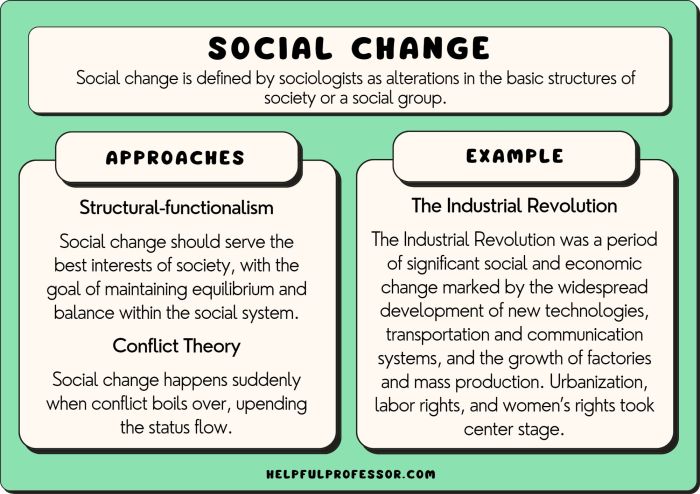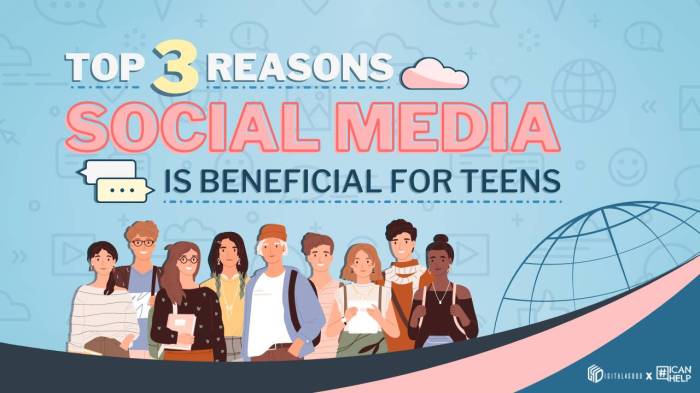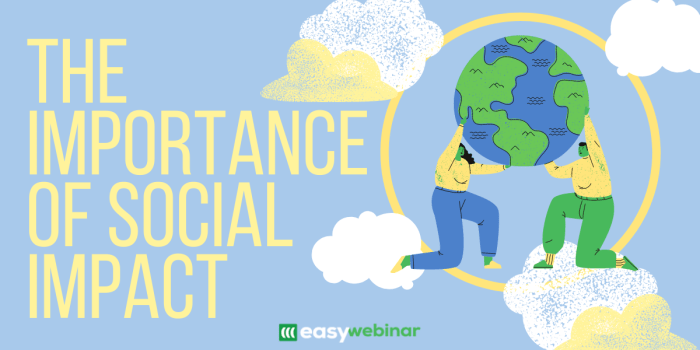Designing solutions for social good requires a strategic approach. This guide Artikels a three-step process for creating impactful initiatives, moving beyond well-meaning intentions to deliver tangible positive change. We’ll explore how to effectively identify social problems, design targeted solutions, and rigorously measure their impact, ensuring your efforts contribute meaningfully to a better world.
By understanding the complexities of social issues and engaging key stakeholders, you can develop solutions tailored to specific needs and perspectives. This process includes careful planning, implementation, and ongoing evaluation, enabling adaptation and optimization for maximum effectiveness.
Understanding the Social Issue

This section delves into the complexities of food insecurity, a pervasive global challenge impacting millions. We will examine its scope, consequences, and the diverse perspectives of key stakeholders involved. Understanding these multifaceted aspects is crucial for designing effective and impactful solutions.
Food insecurity, defined as the consistent lack of access to sufficient, safe, and nutritious food, affects a significant portion of the global population. The World Food Programme estimates that hundreds of millions of people face acute food insecurity annually, with numbers exacerbated by conflict, climate change, and economic instability. The consequences extend beyond hunger, impacting health, education, and overall societal development. Malnutrition, particularly in children, leads to stunted growth, weakened immune systems, and reduced cognitive function, perpetuating a cycle of poverty and hindering progress towards sustainable development goals.
Stakeholder Analysis: Food Insecurity
This section identifies three key stakeholders impacted by food insecurity and analyzes their unique needs and perspectives. A comprehensive understanding of these perspectives is essential for designing interventions that are both effective and equitable.
| Stakeholder | Need | Perspective | Potential Solution |
|---|---|---|---|
| Individuals Experiencing Food Insecurity | Access to affordable, nutritious food; safe and reliable food sources; support services addressing underlying causes of food insecurity (e.g., poverty, unemployment). | Feelings of vulnerability, stress, shame, and hopelessness; struggle to meet basic needs; may resort to unhealthy coping mechanisms. | Targeted food assistance programs; job training and employment opportunities; access to community gardens and food banks; nutritional education. |
| Farmers and Food Producers | Fair prices for their produce; access to resources and technology for sustainable farming practices; stable market conditions; support for climate change adaptation. | Concern about economic viability; vulnerability to market fluctuations and climate shocks; desire for fair compensation for their labor. | Government subsidies and price supports; investment in agricultural infrastructure and technology; initiatives promoting sustainable and climate-resilient agriculture; access to credit and financial services. |
| Government and Policy Makers | Effective policies and programs to address food insecurity; reliable data and monitoring systems; collaboration with stakeholders; sufficient funding for social programs. | Need to balance competing priorities; pressure to demonstrate effectiveness and accountability; challenge of implementing effective and equitable policies. | Evidence-based policy development; improved data collection and analysis; strong inter-agency collaboration; transparent and accountable governance; increased investment in social safety nets. |
Designing a Solution-Oriented Approach

Having understood the social issue—let’s assume it’s the lack of access to clean drinking water in a rural community—we can now focus on designing a solution. This involves creating a practical, sustainable, and impactful intervention that directly addresses the root causes of the problem and promotes long-term positive change. The key is to move beyond simply identifying the problem to developing a robust and well-considered solution.
A proposed solution is to implement a rainwater harvesting system coupled with water purification tablets. The mechanism involves collecting rainwater from rooftops and storing it in appropriately sized tanks. These tanks will then provide a readily available source of water. The water purification tablets will ensure the water is safe for consumption, addressing concerns about waterborne diseases. The expected impact is a significant improvement in access to clean drinking water, reducing the incidence of waterborne illnesses, and freeing up time previously spent collecting water from unsafe sources. This will ultimately improve the community’s overall health and well-being, allowing for greater focus on education, economic activities, and community development.
Implementation Strategies Comparison
Two distinct implementation strategies can be considered: a community-led approach and a top-down, government-led approach. Both strategies aim to achieve the same goal, but their methods, advantages, and disadvantages differ significantly.
- Community-Led Approach: This strategy empowers the community to take ownership of the project. It involves training community members in rainwater harvesting techniques, water purification, and tank maintenance. The benefits include increased community ownership, sustainability, and cost-effectiveness in the long run due to reduced reliance on external support. However, drawbacks include slower implementation, potential challenges in coordinating numerous individuals, and the risk of inconsistent quality control. Successful implementation depends heavily on community engagement and participation.
- Government-Led Approach: This strategy involves the government taking the lead in project planning, funding, and implementation. This approach ensures standardization, efficiency, and access to larger resources. However, drawbacks include the potential for bureaucratic delays, lack of community ownership leading to decreased sustainability after the initial project phase, and the possibility of misallocation of resources due to a lack of local understanding of community needs.
Step-by-Step Implementation Plan (Community-Led Approach)
The community-led approach offers greater long-term sustainability and aligns with principles of empowerment. A well-defined implementation plan is crucial for success.
- Community Engagement and Needs Assessment: Conduct meetings and surveys to assess the community’s needs, identify suitable locations for rainwater harvesting systems, and gauge community willingness to participate.
- Training and Capacity Building: Provide comprehensive training to community members on rainwater harvesting techniques, water purification methods, and tank maintenance. This includes hands-on workshops and practical demonstrations.
- Material Procurement and System Installation: Secure funding and procure necessary materials (tanks, pipes, gutters, purification tablets). Community members will participate in the installation process under the guidance of trained technicians.
- Monitoring and Evaluation: Regularly monitor the water quality and system functionality. Gather feedback from the community to identify any challenges and make necessary adjustments. This will ensure long-term sustainability and effectiveness.
- Sustainability Plan: Develop a long-term sustainability plan, including strategies for maintenance, repair, and future expansion of the system. This could involve establishing a community-managed fund for repairs and replacement parts.
Measuring and Evaluating Impact

Measuring the success of a social impact initiative is crucial for demonstrating its effectiveness and informing future strategies. It allows us to understand what’s working, what needs improvement, and ultimately, how to maximize positive change. This involves selecting appropriate metrics, establishing data collection methods, and developing a robust monitoring and evaluation plan.
Key Metrics for Success
To effectively measure impact, we need to identify specific, measurable, achievable, relevant, and time-bound (SMART) metrics. For a hypothetical initiative aimed at improving literacy rates among underprivileged youth, three key metrics would be: increase in literacy scores, improved school attendance rates, and enhanced self-reported confidence in reading abilities.
Data Collection Methods and Evaluation Criteria
The following table Artikels the data collection methods and evaluation criteria for each of the chosen metrics. This plan ensures a comprehensive assessment of the initiative’s progress and allows for data-driven adjustments.
| Metric | Data Collection Method | Evaluation Criteria |
|---|---|---|
| Increase in Literacy Scores | Pre- and post-intervention standardized literacy tests administered to participating youth. Data will be analyzed using statistical methods to compare average scores before and after the program. | A statistically significant increase in average literacy scores of at least 15% compared to a control group (if applicable) or a pre-determined baseline. |
| Improved School Attendance Rates | Collaboration with schools to access attendance records of participating youth. Data will be tracked monthly and compared to attendance rates prior to the program’s implementation. | A minimum 10% increase in average monthly attendance rates compared to pre-program attendance rates. Analysis will consider factors such as school holidays and illness to ensure accurate interpretation. |
| Enhanced Self-Reported Confidence in Reading Abilities | Pre- and post-intervention surveys administered to participating youth, using a validated scale to measure reading confidence. Qualitative data from focus groups or individual interviews will also be collected to provide richer insights. | A minimum 20% increase in average self-reported confidence scores, supported by qualitative data reflecting improved attitudes and beliefs about reading abilities. |
Monitoring Progress and Adapting Strategy
Regular monitoring and evaluation are essential to ensure the initiative stays on track and adapts to changing circumstances. A quarterly review process will be implemented, involving analysis of the collected data, feedback from participants and stakeholders, and assessment of the overall program effectiveness. This iterative process allows for timely adjustments to the program design, implementation strategies, or target audience based on evidence gathered. For example, if attendance rates are lagging, the program might adjust its schedule or incorporate incentives to improve participation. If literacy scores aren’t improving as expected, the program might revise its curriculum or teaching methods.
Potential Challenges and Mitigation Strategies
Several challenges could hinder the initiative’s success. These include limited resources (funding, personnel, materials), participant attrition, lack of community support, and unforeseen external factors (e.g., changes in local policies or economic conditions). To mitigate these challenges, a comprehensive risk management plan will be developed, encompassing contingency planning for resource limitations, strategies to retain participants (e.g., providing incentives, addressing individual needs), proactive community engagement to build support, and flexible program design to adapt to unforeseen circumstances. For instance, if funding is reduced, alternative fundraising strategies will be explored. If participant attrition becomes a problem, additional support services (e.g., transportation, childcare) will be investigated.
Conclusion

Creating positive social impact demands a structured, iterative approach. By systematically identifying needs, designing effective solutions, and meticulously measuring results, we can move beyond well-intentioned efforts towards tangible and sustainable positive change. This three-step framework provides a robust roadmap for designing initiatives that genuinely improve lives and communities.